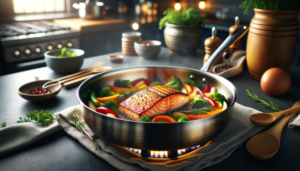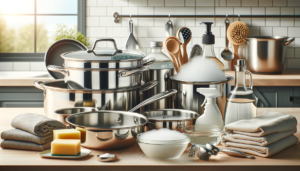Is your stainless steel cookware losing its shine and cooking ability, leaving you frustrated with uneven hot spots and burnt food?
Understanding what separates high quality from inferior stainless steel cookware means investing in a set of pots and pans that performs beautifully for years while maintaining gleaming looks with ease.
Let’s examine the key factors to evaluate when shopping for new stainless steel cookware to equip your kitchen with excellence.
What to Look for in Stainless Steel Cookware
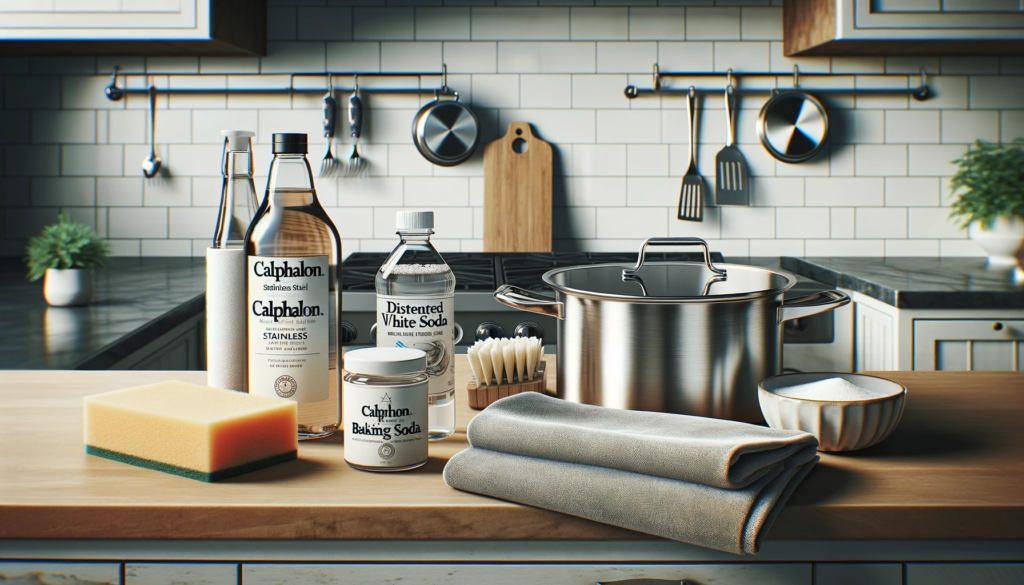
When selecting stainless steel pots and pans, look for cookware made from grades 304 or 316 steel for optimal corrosion resistance.
Seek heavier weight pans at least 2.5mm thick for even heating, with encapsulated or clad bases to improve heat conductivity.
Handles should be riveted on securely and stay cool during cooking.
Lids should fit tightly with no gaps.
Check that welds and rivets are neatly finished for durability.
Ensure the manufacturer states cookware is dishwasher safe.
Quality stainless steel cookware meeting these guidelines will deliver exceptional performance and years of reliable service.
Types of Stainless Steel
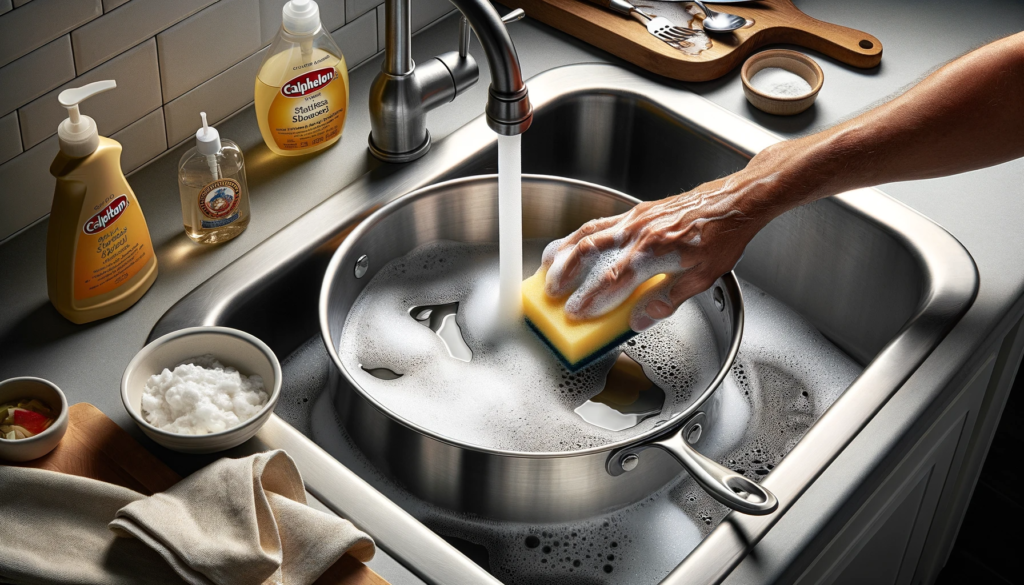
There are a few main types of stainless steel that are commonly used in the construction of pots and pans for home kitchens.
Understanding the differences between the grades of stainless steel available is very important, as it determines factors like durability, ease of maintenance and appearance over time.
Investing in high quality stainless steel cookware is a decision that should last you many years if the right selections are made.
The most common types of stainless steel used to make pots and pans are grades 304, 316 and 430.
Of these, grade 316 stainless steel is considered the best option for cookware.
This is because it offers the best corrosion resistance, meaning it will keep its shiny silver surface appearance for longer without developing pits or tarnishing.
Grade 316 contains molybdenum, which gives it excellent resistance to saline environments like coastal areas, as well as locations with particularly hard water.
It also maintains its lustrous finish far better when exposed to acidic foods like tomatoes or vinegar regularly when cooking.
While grade 316 stainless steel cookware comes at a higher price, it is worthwhile for longevity and reduced maintenance efforts.
Grade 304 stainless steel is second best, offering very good corrosion resistance in most home kitchens.
It too provides a durable, easy to care for surface that resists scratches and scuffs during routine cooking tasks.
Over time some patina or discoloration can occur after repetitive exposure to salt, acids or harsh detergents.
But this is surface only staining that can be revived using specialty metal polish products and affords many years of reliable use before replacement becomes necessary.
Stay away from purchasing lower grade 430 stainless steel cookware, as the nickel content is not high enough to properly combat rust formation long term.
Thickness and Heaviness

When considering stainless steel pots and pans, thicker and heavier gauge construction is best for improved cooking performance.
Skillets and frying pans made from thinner stainless steel are much more prone to developing hot spots during cooking.
This leads to uneven heat distribution, resulting in food burning in some spots while remaining undercooked in others.
It can make perfectly searing a steak or frying an egg frustratingly difficult.
Using thicker cookware means fast, even heating across the entire exposed cooking surface.
For frying pans you plan to use regularly for high heat searing, look for a minimum thickness of two point five millimeters.
An even better option is selecting fry pans and skillets made with three millimeter thick stainless steel for optimal heat conductivity and reduced hot spots during cooking.
When shopping for larger, heavier cookware like stock pots or pasta pots that spend more time gently simmering liquids rather than intense stove top frying, slight thinner walls of one point five millimeters can suffice.
The most important factor is that the base maintains an adequate measurement of between two point five to three millimeters thickness to promote stability, durability and integrated layer bonding over repeated heating and cooling down after each use.
Additional weight in the construction can benefit heat performance too by helping retain warmth effectively once heated up.
This allows your cookware to quickly recover lost heat when you remove the lid to stir or add extra ingredients.
Fully wrapped stainless steel exterior layers or thick impact-bonded bases on pots and pans assist with maintaining desired cooking temperatures.
While heavy cookware requires a little more lifting effort, properly balancing loads between burner sizes and hand points makes this manageable.
The benefit ofregulated, even heating when cooking makes choosing good quality thick metal construction worthwhile.
Impact of Design on Performance
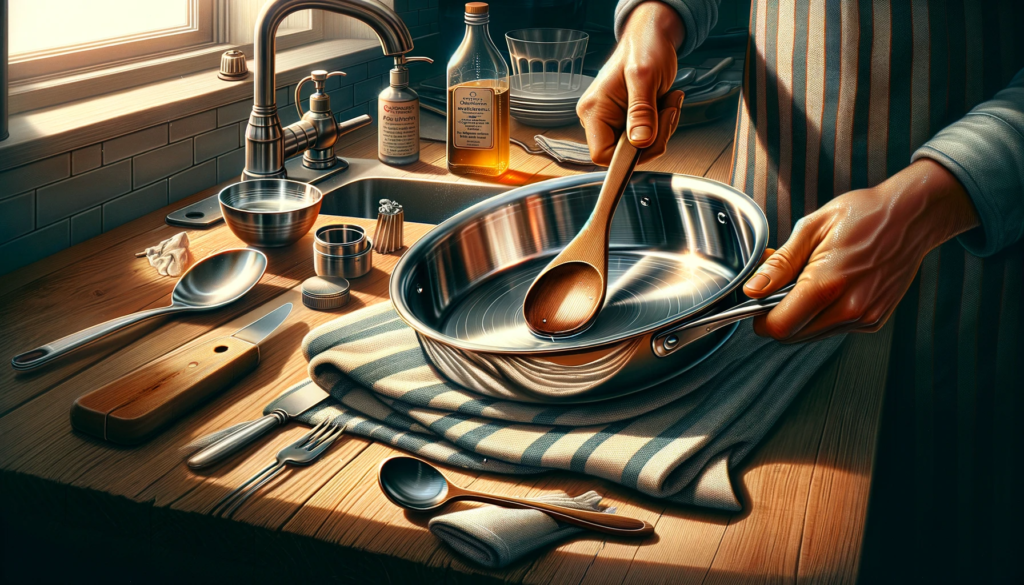
On its own, stainless steel conducts heat at a relatively poorer rate compared to other metals used in cookware such as aluminum or copper.
Luckily several design approaches can greatly improve its heat conductivity and distribution effectiveness.
These include fully clad cookware, encapsulated disc bottoms or impact-bonded bases layered between external and internal stainless steel material.
Fully clad stainless steel pans feature a core layer of highly conductive aluminum or copper metal sandwiched between stainless steel exterior and interior layers.
This encases the sides, entirety of pan bases and often lids too for the ultimate heat distribution and retention.
As you can expect, fully clad stainless steel construction comes at a premium cost.
However the cooking advantages it brings are worthwhile for serious home chefs.
Encapsulated bottom and disc designs also enhance heating performance through the addition of a single conductive aluminum or copper disc layer permanently fused into the base of the pan only.
This offers excellent stove top cooking ability.
Just note that it does not extend as effectively for baking recipes in ovens where all sides of a pot or pan require even warmth consistency.
For those needing good stainless steel cookware on a budget, impact-bonded bases present a decent intermediary option.
Here a thin but sturdy disc of aluminum or copper is pressure fused with intense heat application to the bottom of a stainless steel pan base.
Impact bonding does not provide cooling seamlessness of a fully wrapped clad cookware design, but well manufactured models supply good longevity before loosening over time occurs.
Testing base flatness by spinning pans topside down is recommended – quality stainless steel cookware bases should sit completely flush.
Any evidence of gaps, indentations or hollow drumming noises indicates inferior bonding that suggests premature deterioration.
Handles and Lids
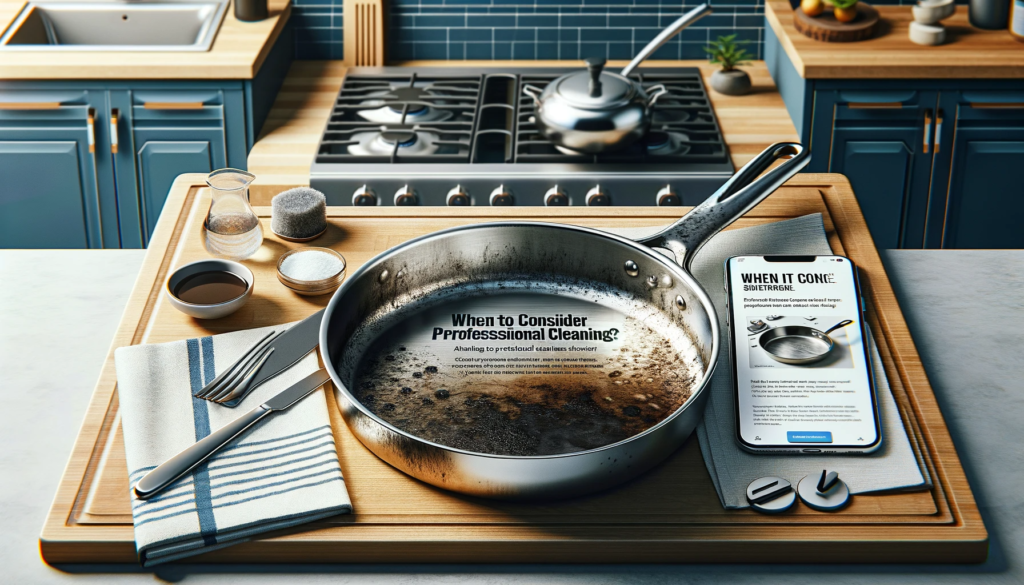
When evaluating stainless steel cookware, careful examination of handles and accompanying lids deserves similar scrutiny to the pans themselves.
On pots and pans, handles need to provide a comfortable, non-slip grip and remain cool enough to grasp during cooking.
Quality metal handles achieve this through partial or full silicone, rubberized or other stay-cool coatings that provide a barrier against heat conduction.
Stainless steel handles retain and transmit warmth exceptionally well – avoid any lacking heatproofing insulation layers.
Much better options for stay-cool handles are silicone, Bakelite or padded phenolic handles that isolate fingers and hands from high cooking temperatures.
For lids, ensure they fit precisely without large steam vent gaps or rattling looseness.
Tight fitting lids retain valuable moisture during simmering or braising tasks – especially useful when cooking with longer prep meats.
Glass lids enable clear visibility of cooking progress without liftoff cooling annoyance.
But stainless steel lids are also excellent performers, particularly heavier gauge designs featuring drip or spatter rims that redirect escaping moisture back into cookware interiors.
Assess handle and lid fixtures independently to check for high quality stability expected from reputable stainless steel cookware manufacturers.
Wobbly components imply mass manufacturing margins were prioritized over precision engineering for enhanced user experience.
While subtle separately, handles and lids combine with trusted cooking surfaces to create functional cookware.
Well-executed stainless steel sets properly balance user handling needs alongside temperature and moisture regulation capabilities that aid cooking excellence.
Don’t underestimate their contribution to seamless pot and pan performance.
Quality of Welds and Rivets
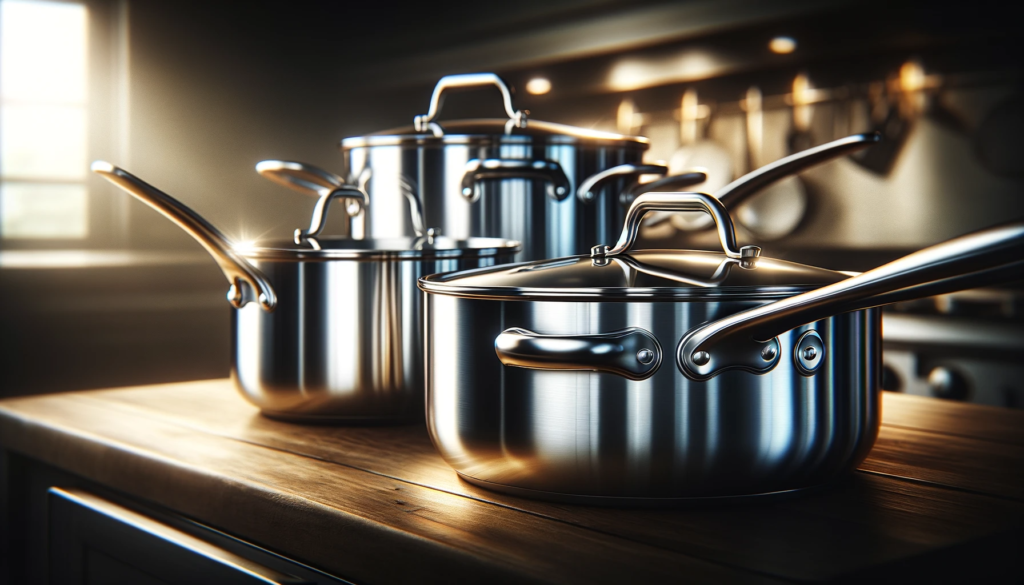
For most homeowners furnishing their kitchens with shiny new stainless steel pots and pans, inspecting the quality of welds and rivets seems insignificant.
However, taking a few moments to examine these finer production details offers revealing glimpses into the manufacturing processes applied by cookware brands.
When companies cut costs and accelerate production timeframes, welds and rivets inevitably suffer declining workmanship standards first.
On quality sets of stainless steel cookware, external welds should feature smooth uniform finishes with no unsightly gaps, starbursts or seal imperfections visible around fused metal joins.
For example, this applies to sections where handles, helper handles or lid fixtures meet pan and pot walls.
Interior welded layers fusing components like encapsulated bases or cladding materials may also feature.
Top notch stainless steel cookware maintains consistent levels of brushed metallic luster whether looking at unified pan surfaces or handle welds.
If noticeable differences in sheen brightness or texture around welds appear evident on close inspection, this signals sub-par manufacturing quality thresholds crept in.
Neat rows of rivets attach stainless steel handles and fix lids into position.
Spacing and alignments between riveting should maintain precision accuracy across a cookware set for upmarket appeal.
While hand finishing offers uniqueness, misshapen or haphazard rivets point toward mass manufacturing margins afforded over exacting human craftsmanship.
Additionally, high grades of stainless steel cookware extend matching brushed steel textures uniformly across riveted fixings.
Lesser steel grades often miss this level of cohesive attention to detail.
Though easy to overlook, examining the tidiness of welds and rivets provides reliable indications into stainless steel cookware’s intended lifespan.
Sets with well-merged seam joins and neatly placed rivet fixtures infer superior workmanship hard to approximate through rushed mechanized means alone.
Dishwasher Safe?
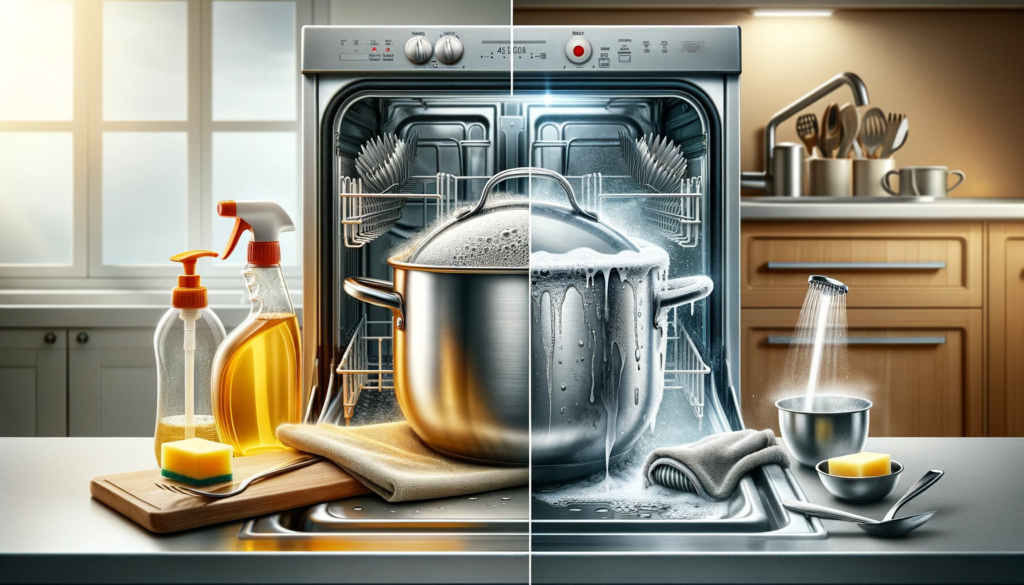
Lastly, a key specification to check before purchasing expensive stainless steel cookware is whether items are rated as dishwasher safe.
While stainless steel construction holds up well against intensive, regular cooking use without issue, harsh dishwasher detergents can erode polished metallic surfaces significantly over time.
Left uninformed, many homeowners fall into the trap of presuming stainless steel durability extends to all cleaning methods.
Dishwasher automated washing introduces corrosive concentrated formulas and scorching high-pressure spray patterns that damage stainless steel finishes not manufactured to withstand such repeated exposure.
Visible greying, cloudiness and scratched external layers become unavoidable after months to years of intensive dishwashing machine use.
Always refer to manufacturer documentation before placing stainless steel cookware inside dishwashing cavities.
Hand washing is always the safest practice, using gentle detergents free from acidic lemon juice or bleach ingredients that degrade metal.
For pots and pans with brushed stainless steel finishes take extra precautions.
Microscopic textured grooves within satin finishes collect residual detergent traces.
Over repeated hot rinses, these cleansing agents react detrimentally with stainless steel removing luster.
When hand washing, thoroughly rinse backs of sponges across entire pan surfaces after soaping to extract all traces of cleaning products.
Additionally, allow cookware to fully air dry before storage to prevent watermarks manifesting through mineral residue deposits.
Conclusion
When searching for new stainless steel cookware, take the time to inspect the steel grade, weight, construction quality, design elements, handles, lids, welds and care recommendations.
Choosing high grade materials from reputable manufacturers results in durable, high performing pots and pans that distribute heat evenly and look sensational.
With proper care and maintenance, excellent stainless steel cookware sets enhance cooking pleasure for over a decade.

